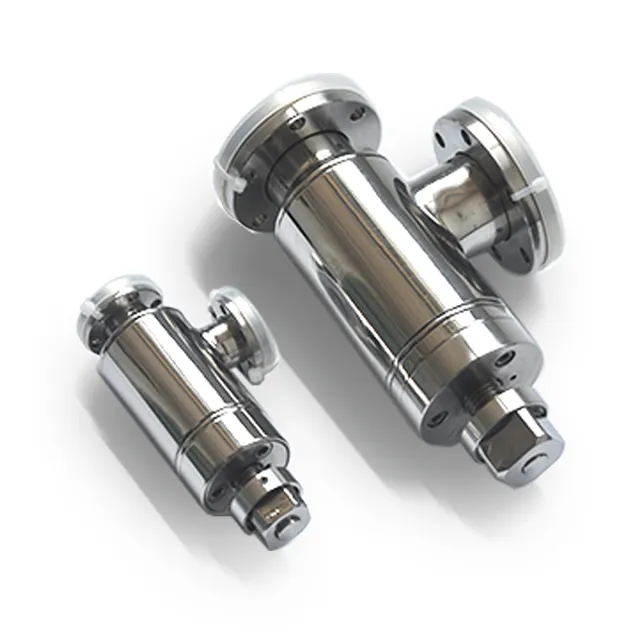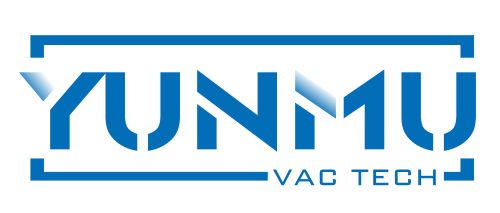Key Considerations for Selecting Tailored Vacuum Systems
Assessing Application Requirements
Selecting an appropriate vacuum system requires knowing what exactly the application demands. Start by looking at what materials or processes are involved, paying attention to particle size and characteristics since these factors influence what kind of vacuum conditions work best for different substances. Understanding both the needed vacuum level and how much material needs to move through the system helps ensure good performance. Labs typically need higher vacuum levels compared to many industrial applications where lower levels often do the job just fine. Checking whether the new system works well with current equipment matters too, saving money on unnecessary changes and making installation smoother. Keep all these points in mind when picking out a vacuum solution that boosts productivity while keeping expenses down over time.
Evaluating Industry-Specific Challenges
Different industries run into all sorts of problems with their vacuum systems, and knowing what those problems are makes all the difference when picking the right equipment. Take food processing plants for example they constantly battle contamination risks from dust and particles getting into products. Meanwhile, in pharmaceutical manufacturing, materials tend to break down over time which creates another whole set of headaches. Getting to grips with these particular issues lets engineers build vacuum systems that actually work for what the business needs. There's also the question of regulations and environmental rules that shape how these systems get designed and operated day to day. Meeting these standards isn't just about staying out of trouble legally it's becoming increasingly important as companies try to green up their operations. Things like extreme temperatures or high humidity levels in certain facilities can really mess with how well a vacuum system performs too. When manufacturers tackle these specific industry challenges head on, they end up with vacuum solutions that perform better and stay within all the necessary regulations across different sectors of the market.
Industry-Specific Needs for Vacuum Systems
Manufacturing and Material Handling
Vacuum systems now play a big part in manufacturing and moving materials around factories, helping automate production lines while keeping things running smoothly. They're really important for stuff like making sheet metal parts and shaping plastics, where getting things right quickly matters a lot. When companies use vacuum tech, they tend to run their operations better, need fewer workers doing repetitive tasks, and get more products out the door each day. Factories that upgraded to good vacuum systems saw real improvements too, some even jumping ahead by about 30% in how efficiently they work. As these vacuum setups keep improving across manufacturing, businesses find themselves saving money on day-to-day costs while completely changing the way bulk materials move through their facilities.
Healthcare and Laboratory Applications
Vacuum systems play a key role in keeping things clean and controlled in hospitals and labs where sensitive work happens. They're really important for stuff like freeze drying medications, which needs absolutely no contaminants to keep drugs pure and working properly. Lab technicians know that good vacuum tech makes all the difference when it comes to keeping standards high. Without proper vacuum control, even tiny particles can ruin experiments or put patients at risk during medical procedures. The newer models on the market cut down on contamination problems by around 70% according to recent tests. That's why many facilities are upgrading their old systems these days. Clean air matters a lot in places where lives depend on precise results, so investing in better vacuum equipment isn't just smart business it's often necessary for compliance with health regulations.

Types of Vacuum Systems and Their Applications
Oil-Free vs. Oil-Lubricated Systems
Choosing between oil free and oil lubricated vacuum systems matters a lot when it comes to getting good performance without breaking the bank. Oil free models work without any oil inside those compression areas, which makes them perfect for places where keeping things clean is super important like in drug manufacturing or electronic component production. These systems need less maintenance overall and don't create problems with disposing used oil, so they're better for the environment too. On the flip side, oil lubricated systems tend to be tougher and generally cost less when first purchased, so many factories go this route for tough jobs where dirt isn't such a big deal. Sure, oil free units may save money long term because they don't need servicing as often, but oil based ones can end up costing more later on account of all those oil changes and proper disposal requirements. The smart approach? Look at everything from initial price tag right through to how much power they consume and how often service visits happen before picking what fits best for particular operations.
Centralized vs. Decentralized Solutions
When deciding between centralized versus decentralized vacuum systems, manufacturers need to think about how efficient and adaptable their setup needs to be. Centralized options work great when there are several machines to connect at once since they take up less floor space and make maintenance easier overall. On the flip side, many plants are turning towards decentralized systems these days because they give much more control over specific equipment needs. These systems let operators tweak settings as required and scale operations up or down depending on what's happening on the factory floor. According to recent manufacturing surveys, companies that implemented decentralized vacuum tech saw real improvements in both productivity metrics and operational costs. Businesses looking to stay nimble in today's fast paced market while still getting better results from their production lines often find that going decentralized is the smart move forward.
Maintenance and Safety Protocols
Routine Maintenance Best Practices
Keeping up with regular maintenance makes all the difference when it comes to how long vacuum systems last and how well they perform. Most technicians recommend looking at filters monthly, swapping out worn belts every few months, and doing a visual check on everything else at least quarterly. These simple steps stop breakdowns from happening when least expected. Manufacturing plants report saving thousands annually just by sticking to these basic checks. For those wanting to get ahead of problems, there's software available now that tracks maintenance history and flags possible issues before they become major headaches. While not foolproof, these tools help shops catch small problems early and avoid production delays during critical times.
Safety Standards for Hazardous Environments
When working with vacuum systems that handle hazardous materials, having solid safety protocols in place just makes good sense. Explosion proof equipment and reliable fail safes aren't optional extras they're essential parts of accident prevention and keeping operations running safely. Following industry guidelines from organizations like OSHA or NFPA isn't just paperwork it's actually critical for anyone using vacuum systems in risky environments. And let's not forget about training. Operators need thorough instruction on emergency responses and how to handle the equipment properly. Without this kind of hands on knowledge, even the best written safety rules won't translate into real protection on the job site.
Cost and Energy Efficiency Analysis
Balancing Initial Investment and Long-Term Savings
Looking at vacuum systems requires balancing what we spend up front with what we save down the road. Sure, high end systems come with a hefty price tag initially, but they tend to run better and cheaper in the long haul which makes them worth the money for most businesses. Many folks actually run numbers through financial formulas to see if buying something expensive pays off eventually. Take some factories that switched to greener methods as an example. These places saw real drops in their overall expenses after making the change. Maintenance bills went down too when companies stuck with quality equipment instead of constantly replacing cheaper alternatives. Plus, operations just ran smoother day to day once reliable systems were in place across different departments.
Energy-Efficient Technologies
Vacuum systems now come with energy-saving tech such as variable speed drives and heat recovery units that cut down power needs significantly. Companies see real savings on their electric bills when they upgrade, plus many get tax breaks for going green. One factory did an energy check before and after installing these upgrades and found energy use dropped by nearly 30%. That kind of reduction makes a big difference in carbon emissions over time. For manufacturers looking to shrink their environmental impact while keeping costs down, integrating these efficient vacuum solutions isn't just smart business it's becoming almost essential in today's market where sustainability matters more than ever.
FAQ Section
What is the importance of assessing application requirements for tailored vacuum systems?
Understanding your specific needs related to the materials and processes involved is crucial for selecting the right vacuum system. This ensures optimal performance and compatibility with existing machinery, reducing costs.
How do industry-specific challenges affect vacuum system choices?
Industry-specific challenges such as contamination in food manufacturing or material degradation in pharmaceuticals require tailored vacuum system designs to meet these unique needs.
Should I choose oil-free or oil-lubricated vacuum systems?
Oil-free systems are ideal for industries with strict cleanliness standards, while oil-lubricated systems are suitable for heavy-duty applications where contamination is not a concern.
What are the benefits of energy-efficient technologies in vacuum systems?
These technologies reduce energy consumption, lower electricity bills, and contribute to environmental sustainability, aligning with global eco-friendly goals.

